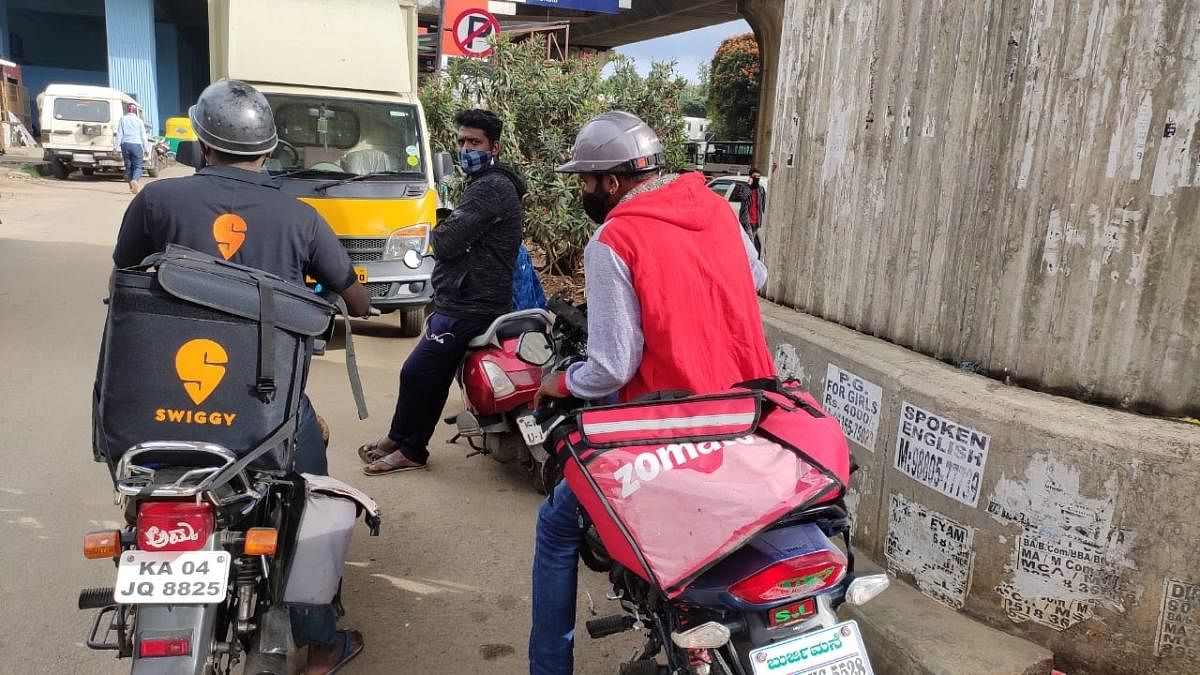
The restaurant business is demanding delivery apps reduce their charges at least by 5 per cent.
Aggregators like Swiggy and Zomato charge up to 30 per cent of a restaurant bill towards delivery.
The Federation of Hotel and Restaurant Associations of India (FHRAI) wrote to the aggregators last week requesting them to reduce their commissions with retrospective effect from 2020.
Takeaways and food delivery have helped many in the restaurant industry survive through the pandemic.
A Swiggy spokesperson says, “To support the industry which has been grappling with lower dine-ins, we had deferred any revisions... and introduced the ‘Jumpstart Package’ aimed at aiding restaurants’ recovery and growth.”
In an industry-first, Swiggy saysa, it supported 50,000-plus restaurants with safety and hygiene initiatives, packaging solutions, and marketing assistance.
“The ones that availed the business booster package were able to fast-track their recovery by 30-40 per cent. As the festivities begin, we are expecting a steady growth in order volumes,” the spokesman says. Helping restaurants gain traction by offering discounts is a common strategy among aggregators. Nikhil Hegde, owner of Smally’s restaurant chain, says the strategy has its pros and cons.
“Customers are definitely attracted when they see that the prices are cheaper but for a restaurant owner, the costs are the same as we still have all the bills to pay,” he says.
Some restaurants sign up to be exclusive (be visible only on one aggregator platform).
Jayanth Narayanan, founder and director of Mani’s Dum Biryani, says it would help if aggregators were more transparent. “When you favour one restaurant over another, it doesn’t allow the industry to grow,” he says.
He says the aggregators have been helpful during the pandemic.
“Many restaurateurs feel it is cheaper to do the deliveries themselves. But these aggregators actually charge less than what the restaurants would spend. It is expensive to have your own delivery system,” says Jayanth.
Restaurant owner Nathaniel (name changed on request) is happy that Swiggy has been giving their weekly payouts twice weekly instead of only once. “This way, everyone has access to the money. Running a business overall is not easy, but things are not so bad that you need to whine about them,” he says.
Amazon has started its own food delivery in some parts of the city and is charging restaurants only 10 per cent on their bills.
Some restaurants are delivering the food themselves, and within a radius of about 5 km.
Customers sometimes rely on delivery app Dunzo to get their food, bearing the delivery charges and thereby reducing the burden on restaurants.
Zero-commission deal
A Zomato spokesperson says the company is offering a commission-free arrangement for restaurants.
This essentially means customers can order through the Zomato app, and collect the food in person.
No delivery executive is involved in the operation. Pradeep Shetty, joint secretary of FHRAI, says this is not really a viable option.
“Ever since the pandemic broke out, restaurants are surviving because of home delivery. And making the customer come to the restaurant isn’t really the right way to go about it,” he says.
Delivery network plans
Madhukar Shetty, general secretary of the Karnataka Pradesh Hotel & Restaurants Association, says darshinis pay between 15 and 30 per cent for delivery.
“We were in talks with Swiggy and Zomato last year about reducing the commission and in the current scene, we find it even more difficult.
We are still negotiating with them,” he says. Some biryani outlets have tied up with the aggregators to sell at a discount after 9 pm. “Customers have also learnt this trick and wait to order. This tends to affect other businesses,” Madhukar contends.
“The more popular your restaurant, the less you pay. That’s how the aggregators approach the business, and that is not helpful at all,” he says.
The association is working on starting its own delivery system, and that might take three more months, he says.